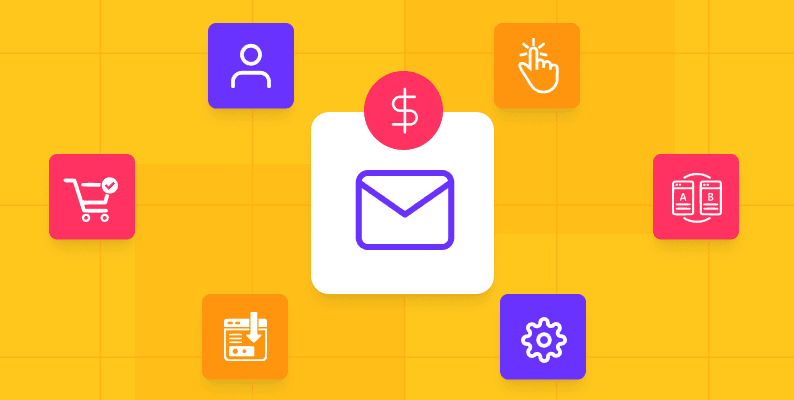Email continues to be an incredibly effective sales channel. Email accounted for 19.8% of all transactions, second only to paid search (19.9%) and organic traffic (21.8%), according to Custora ecommerce Pulse.
There’s been a dip in conversion rates though: in 2018, the average email conversion rate peaked at 18.49%. Despite significant declines in 2019 and 2020, the 2020 conversion rate of 15.1% is still respectable.
In 2021, the overall email marketing conversion rate decreased further to 15.22%:
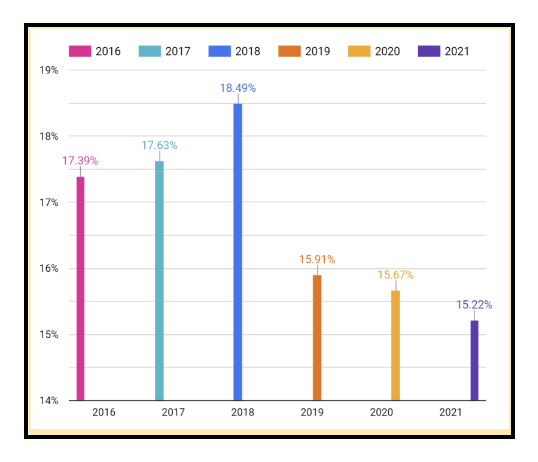
Could one of the reasons for the decline in email conversion rate be that people are receiving irrelevant emails like 53% of customers complain?
Email conversion rates indicate the frequency with which subscribers convert into customers after interacting with your email content.
When you send a campaign that results in a low conversion rate, you should refine your sending and concentrate on the content that resonates most strongly with the recipients.
It is essential to keep a close eye on your email marketing elements and continually optimize them for optimal results. To enable you, we’ve compiled a list of 6 tried-and-tested strategies to increase your email conversion rate:
1) Level up your segmentation
Segmented email campaigns has resulted in a 760% increase in revenue for marketers.
This increase in email revenue can be attributed to the improved engagement that comes with email list segmentation, as offers and messages that are tailored to the target audience perform exceptionally well.
Your email list audience can be segmented based on demographics, interests, preferences, and past behavior/engagement (both on the website and in previous emails).
Always prioritize sending to engaged segments to increase opens and clicks. Consequently, as you increase the sophistication of your segmentation, you will likely observe an increase in conversion rate.
For instance, you can create a segment of low-CLV shoppers as a specific strategy for increasing conversions. These customers have a below-average customer lifetime value (CLV) but still interact with your brand content; therefore, they are likely to be bargain hunters. With this information, you can send them special discounts via email to encourage conversion.
Likewise, you can target a VIP segment with exclusive content, deals, products, and more. You can also invite these devoted VIPs to generate content and referrals that will increase the conversion rates of new subscribers.
You can also segment your email audience based on their stage in the buyers’ journey, past purchases, purchase amount, purchase frequency, sign-up source, etc.
Segmenting your audience based on Recency, Frequency & Monetary actions can feel daunting, we’ve taken a deep dive into how you can segment your subscriber base effectively in our blog RFM Segmentation – Identifying the Worth of Each Customer.
Apart from basic segmentation such as these, you can create custom segments too based on zero-party data. For instance, a buying guide form enables you to collect a variety of information about what a customer is searching for in your store. Their responses can help you create emails that are directly relevant to their interests.
Also, quizzes can enable you to not only ensure that you showcase a tailor-made product for each individual customer but also give you a goldmine of zero-party data that you can build upon to create specific segments of customers to whom you can send hyper-personalized emails later:
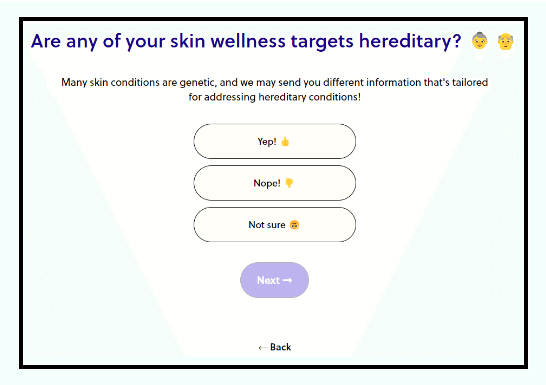
2) Optimize email flows via automation
Automated email flows are an excellent way to increase email conversions with minimal manual effort because once created, they automatically email subscribers/customers when they meet the criteria for communication.
These are a few of the essential email flows you should automate:
Welcome series
A successful welcome series can increase your email conversion rate by 10x. For optimal conversion rates with welcome campaigns:
- Welcome them to your brand or community within 24 hours of their registration.
- Invoke excitement and use a friendly tone (if it’s on-brand, use subtle jokes).
- Don’t be afraid to flaunt what makes your brand distinctive.
- Connect emotionally with new subscribers by sharing your brand’s history.
- Invite subscribers to browse your store’s most popular categories.
- Offer new subscribers special discounts on their initial purchases.
Abandoned cart series
Abandoned cart email series are essential for increasing your email conversion rate, as someone who truly wants to buy from your brand may abandon their cart for a variety of reasons.
Sending them a reminder message, as well as an offer for a discount, increases the likelihood that they will return to place an order.
According to the Ecommerce Industry Benchmark Report for Abandon Carts, about 70% of carts are abandoned. Without this flow, you miss out on a wealth of possible conversions.
Cart abandonment emails typically result in a 10% revenue recovery. To launch an email campaign with higher conversion rates for cart abandonment:
- Send within 24 hours of a customer abandoning their shopping cart on your website.
- Include a list of the items in their shopping cart and the total price.
- Offer free shipping because hidden fees are one of the leading causes of shopping cart abandonment.
- Encourage them to purchase without registering (a leading reason for cart abandonment).
- Provide a simple return policy that allows them to try the product.
Winback series
If your customers have not engaged with your emails or website for some time, you should send a winback email series. Typically, it contains special offers that encourage inactive/lapsed/dormant customers to take action, in effect increasing your email conversions.
A compelling winback series:
- Brings inactive customers back into engagement (their input can be quite useful for reactivating them and others)
- Provides options to unsubscribe or selectively subscribe to email content
- Provides incentives such as discount coupons or customer loyalty programs
- Provides a pre-populated shopping cart to reduce friction during checkout
Other email flows that when automated can boost email conversion rates include:
- Abandoned browse series
- Anniversary and birthday emails
- Back-in-stock emails
3) Use CTAs and links judiciously
Optimizing your email CTA can increase email conversion rates by as much as 90%.
Optimizing a CTA in an email goes beyond using powerful words in CTA buttons or making it bold and a specific color, as is commonly suggested. Yes, these are all significant, but there is much more to consider.
Many brands commit the error of treating CTAs as separate elements of their emails. In contrast, the rest of the email should be a buildup to and focus on the CTA:
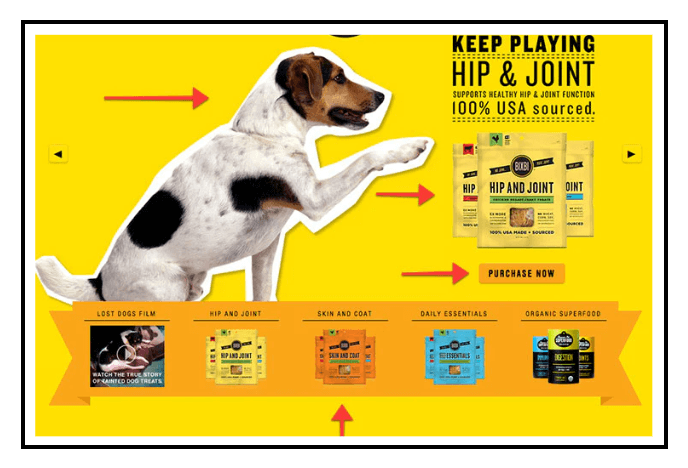
Apart from the CTA, you can also include links in emails for customers to click and engage with your website’s content. However, the links you include should be relevant to your content and drive conversions, as this activity is directly proportional to the conversion rate.
In general, you should link primarily to your PDPs (product detail pages). If you link to your homepage, blog, or contact page rather than to your PDPs, your conversion rate may decrease. This does not imply that you should eliminate all non-ecommerce links that benefit your brand; rather, you should reduce their number.
Additionally, consider the following best practices when adding links:
- Make sure they are visible and highlighted in your email design.
- Include a distinct CTA to entice a click.
- Ensure that all links are active and lead to the correct landing pages.
- Avoid adding excessive links that will overwhelm recipients.
4) Optimize your landing pages
The actual conversion you seek from your email does not occur within the email itself.
Yes, some subscribers who clicked your email CTA are ready to take the conversion action, but many others will require a conversion nudge.
Here is where your “post-email click-through landing page” comes into play.
If you have a great email campaign but are struggling to achieve high email conversion rates, you may want to optimize the landing page where you direct your email recipients to take action. An email landing page is a location where the action that moves your subscribers further down the sales funnel toward your email marketing objective occurs.
In addition to adhering to the standard best practices for landing page optimization, a great email landing page will:
Maintain the look and feel of the email: Maintain the customer experience that led them to your landing page. Maintain the same fonts, colors, visual assets, titles, and even headlines. Make it clear that the email and landing page are related. This approach has a usability psychology effect that helps maintain the conversion momentum you’ve established in the email.
Expand on what you began in the email: Reiterate your email message, provide additional information and benefits of the offer, respond to any questions they may have, and address any possible objections to purchasing.
Maintain a laser-like focus on one action: There should be only one action that page visitors are required to take. Do not be tempted to include alternative CTAs on the landing page in case the primary ones do not convert; these will only serve as distractions.
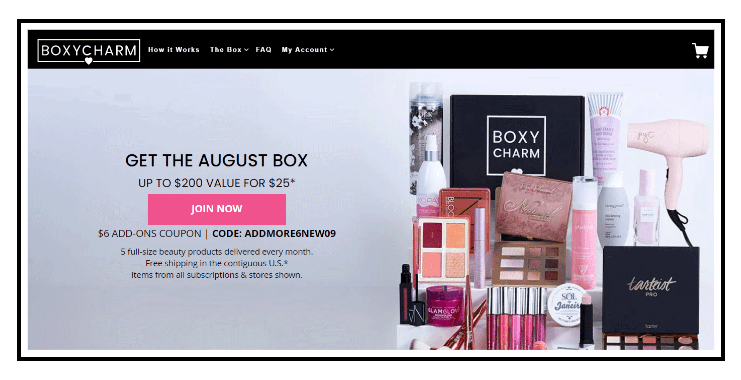
Boxycharm serves the intended purpose of its landing page by keeping it devoid of distractions and focusing on a single CTA (JOIN NOW). In addition, it provides sufficient information to evaluate the value of the product. Additionally, it provides an incentive to close the deal.
Use UGC to trigger action: In addition to the typical landing page elements such as FOMO, badges, and reviews used to reinforce trust, use User-Generated Content (UGC) to push subscribers towards conversion. UGCs serve as social proof from actual customers while demonstrating the functionality of your product.
5) Improve the checkout experience
Consider the checkout process that your customers undergo when making purchases on your site. For instance, any changes to the checkout experience (such as the addition of a new form or layout) can result in a change in the overall conversion rate, hence affecting your email conversions as well. If this rate decreases, you should consider whether the change is worth the revenue loss.
Similarly, if the price of your products or shipping has recently increased, or if you suddenly offer fewer incentives for subscribers, your conversion rates may decrease. To accommodate higher price points, you will likely need to rethink your target segment. For instance, sending marketing emails for higher-priced products to a segment of high-CLV customers may lead to higher email conversion rates.
Alternatively, if you can no longer offer a specific discount, offer a less expensive incentive that is still exciting, such as free shipping or the chance to join a VIP program with additional purchases.
If you anticipate a delay in shipping, inform your customers immediately. Consider including shipping details in your post-purchase follow-up email and/or on your website proactively. If you set appropriate expectations from the beginning, they will be more likely to return for future purchases.
Here are a few tips to optimize their checkout experience:
Simplify the checkout process: Remove all distracting links, buttons, and content. Only leave content that provides essential information that encourages customers to complete the checkout process, and use an accordion template to answer FAQs while reducing distraction:

Facilitate the checkout process: Introduce auto-fill, permit the use of previously saved cards/payment modes, and enable order editing at checkout.
Always optimize for mobile: For instance, place your CTA in a thumb-friendly location and make it full-width. Look at how the CTA by Casper is designed; it is blue, bold, and full-width, as it should be:
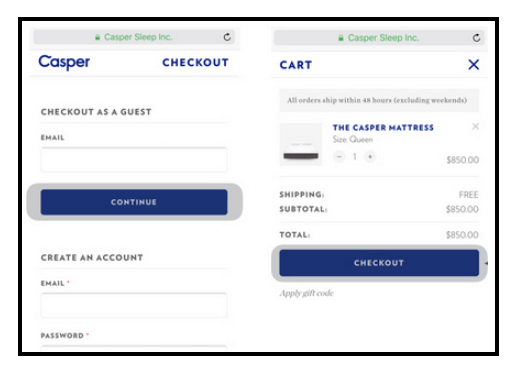
6) A/B test everything, one thing at a time
A/B testing is a vital component that allows you to determine the content, send times, and subject lines that receive the best response from your audience. A/B testing can improve email marketing conversion rates by as much as 49%.
In an A/B test, multiple variations of a campaign or an automated email flow can be created. These variants can display different copy and creative work to a subset of your segment to determine what increases conversion rates. For instance, both content and subject lines can be tested to determine which copy leads to higher conversion rates. You can also test which content results in a higher conversion rate within a flow: showcasing your best-selling products or new collections.
Alternatively, you can test the likelihood of a recipient making a purchase after opening a campaign with a humorous subject line versus a serious subject line, honing in on the preferred tone of your audience.
To make A/B testing successful:
- Don’t test email elements randomly. Understand the purpose of testing and have a rationale for each test.
- Ideally, test only one variable at a time.
- Focus on testing email elements that have the greatest impact on your email marketing conversion rates: subject lines, CTAs, offers, and product images.
- Ensure that your test groups consist of recipients from the same email segment.
- Ensure that your test groups are sufficiently sized for statistical significance.
Be pertinent, concise, and concise
Ensure that you give your email subscribers and customers a reason to open and interact with your email. By sticking to a single, unambiguous message, you are more likely to persuade your recipients to read your email and ultimately convert.
Remember that your readers are inundated with emails and do not have the time to read lengthy ones. So, include ample white space and use only relevant product images.
It is essential to resist the temptation to add more content in the hopes that something will convince readers to click through. Consider the purpose of the email, compose the copy around that purpose, and then emphasize your CTA.
Similar to other marketing channels, email must be routinely tested and continuously optimized to increase engagement rates. These six strategies will assist you in achieving higher email conversions and enable your brand to grow.
You may also like
Essential resources for your success
